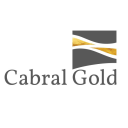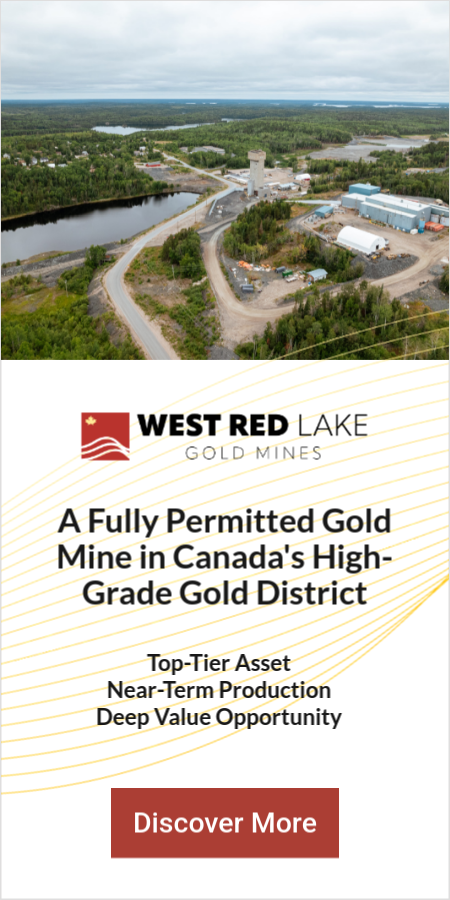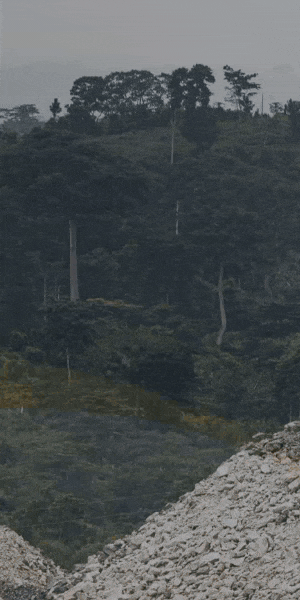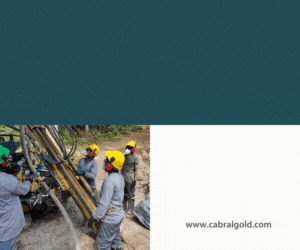Cabral Gold: Positioning for Brazil's Next Major Gold Discovery in the Tapajós Province

Gold exploration advances at PDM target with high-grade intercepts while favorable macro conditions support precious metals outlook
- Cabral Gold is advancing its Cuiú Cuiú Gold District in Brazil's Tapajós Province with recent drilling at the PDM target returning 23 meters at 4.7 g/t gold, reinforcing the district's potential to host multiple high-grade deposits alongside existing resources of 666,000 ounces indicated and 526,000 ounces inferred.
- The company controls a 216-square-kilometer land package adjacent to GMining's Tocantinzinho mine in an emerging gold district that historically produced an estimated 2 million ounces of placer gold, ten times more than the Tocantinzinho area.
- With gold prices recently exceeding $4,300 per ounce and central bank demand reaching 25 percent of total gold demand in 2024 compared to 12 percent in 2015-2019, Cabral's development-stage assets are positioned to benefit from the current precious metals rally driven by geopolitical uncertainty and safe-haven flows.
- The company's updated preliminary feasibility study released in July 2025 demonstrates attractive economics with 78 percent after-tax IRR and $74 million NPV at $2,500 per ounce gold, improving to 139 percent IRR and $138 million NPV at current gold prices of $3,340 per ounce, with first production targeted for H2 2026.
- Management's track record includes five grassroots gold discoveries in Brazil with NI 43-101 compliant resources, including the adjacent Tocantinzinho deposit now in production, while CEO Alan Carter has personally invested C$1.95 million and the company maintains three active drill rigs testing over 50 regional targets across the district.
Company Overview: District-Scale Gold Potential in a Proven Mining Camp
Cabral Gold operates in the Tapajós Gold Province of northern Brazil, where the company has systematically consolidated one of the region's most prospective land positions. The Cuiú Cuiú project covers approximately 216 square kilometers along the same regional Tocantinzinho structural corridor that hosts GMining's recently commissioned gold mine, Brazil's third-largest gold operation.
The district's historical significance provides compelling exploration context. According to Brazil's National Mining Agency (ANM), the Cuiú Cuiú area produced an estimated 2 million ounces of placer gold during the Tapajós gold rush from 1978 to 1995, ten times the placer production from the Tocantinzinho area. This substantial historical placer production suggests significant primary gold sources remain to be fully delineated.
Cabral's systematic exploration has identified three main gold deposits, Central, MG, and JB, containing combined indicated resources of 12.29 million tonnes at 1.14 g/t gold (450,200 ounces) in primary material and 13.56 million tonnes at 0.50 g/t gold (216,182 ounces) in oxide material. Inferred resources add another 13.63 million tonnes at 1.04 g/t gold (455,100 ounces) in primary material and 6.40 million tonnes at 0.34 g/t gold (70,569 ounces) in oxide material. Beyond these established resources, the company has made four recent hard-rock discoveries at PDM, Machichie Main, Machichie NE, and J Cima, with drilling continuing to define their extent.
Key Development: High-Grade Drilling Results at PDM Target
The company's November 14, 2025 announcement detailed significant drilling results from the PDM target area, located approximately 2.5 kilometers northwest of the Central deposit. Drill hole DDH353 intersected 23.0 meters at 4.7 g/t gold from 36 meters depth, including a higher-grade interval of 11.9 meters at 7.4 g/t gold. This discovery builds on previous PDM drilling that returned intercepts including 22.4 meters at 4.8 g/t gold, 18.0 meters at 2.5 g/t gold, and 47.0 meters at 1.8 g/t gold.
President and CEO Alan Carter commented on the results:
"We are very pleased with the results from DDH353 at PDM which has returned the best intersection to date at the target. The intersection of 23m @ 4.7 g/t gold including 11.9m @ 7.4 g/t gold has significantly upgraded this target and confirmed the extension of mineralization at depth. Together with the recent high-grade results from Machichie NE, these results demonstrate the district-scale potential of the Cuiú Cuiú project and our systematic approach to unlocking value through the drill bit."
The PDM discovery originated from the identification of gold-in-oxide blanket material, which subsequent drilling proved overlies primary gold mineralization with significant vertical and lateral extent. This geological model, near-surface oxide material overlying hard-rock mineralization, characterizes multiple targets across the Cuiú Cuiú district and forms the basis for Cabral's two-stage development strategy. Exploration work has identified a gold-in-soil anomaly extending at least five kilometers along strike, encompassing both the PDM target and the Central deposit. Much of this geochemical anomaly remains untested by drilling, representing substantial exploration upside.
Strategic Significance: Brazil's Tapajós Gold Province Emergence
The Tapajós Gold Province has transitioned from an emerging exploration district to an established mining region with the September 2024 commissioning of GMining's Tocantinzinho mine. This development validates the region's geological potential and demonstrates that economic gold deposits can be successfully developed in this jurisdiction despite its remote Amazon location.
All known deposits in the Tapajós region are controlled by the major northwest-trending Tocantinzinho structural zone, which extends through Cabral's property. This structural corridor has proven to be a key mineralizing control, with Cabral's deposits and discoveries positioned along the same favorable geology that hosts Tocantinzinho's 2.1 million ounce measured and indicated resource base.
The proximity and geological similarities to Tocantinzinho provide important validation for Cabral's exploration model. Both projects feature intrusive-hosted, disseminated gold deposits with similar mineralogy and metallurgy. However, key differences favor Cabral's ground: the Cuiú Cuiú area contains multiple deposits and discoveries within a 10-by-15-kilometer area, whereas Tocantinzinho represents a single large deposit. Historical drilling outside Tocantinzinho by previous operators yielded modest results, with best intercepts around 20 meters at 1.73 g/t gold, while Cabral's deposits consistently show very high-grade zones exemplified by the recent 11-meter intersection at 33 g/t gold at Machichie NE.
Current Activities: Dual-Track Strategy for Value Creation
Cabral pursues a two-stage development strategy designed to generate near-term cash flow while advancing district-scale exploration. The company released an updated preliminary feasibility study in July 2025 for a starter heap-leach operation targeting near-surface gold-in-oxide material at the MG, Central, and Machichie Main deposits.
The feasibility study outlined an attractive initial operation with after-tax internal rate of return of 78 percent and net present value of $74 million at $2,500 per ounce gold price. The project contemplates initial capital expenditure of $37.7 million, with ten-month payback period and life-of-mine gold production of 113,155 ounces over 6.2 years. During the initial two years, the operation would produce approximately 25,000 ounces annually at all-in sustaining costs of $950 per ounce. At the spot gold price of $3,340 per ounce prevailing when the study was released in July 2025, the after-tax IRR increased to 139 percent with NPV of $138 million.
This starter operation strategy offers several advantages. The gold-in-oxide material requires no drilling, blasting, crushing, or grinding, significantly reducing capital and operating costs. Metallurgical testing demonstrated 87.8 percent average gold recovery through heap leaching. The operation would generate cash flow to fund continued exploration drilling across the district's numerous targets without requiring dilutive equity financings.
Recent Discoveries: Expanding the Resource Base
Beyond the established Central and MG deposits, Cabral has made four significant hard-rock discoveries that require additional drilling to define maiden resources. The Machichie complex, located immediately north of the MG deposit, comprises several distinct zones including Machichie Main, Machichie NE, Machichie West, and Machichie SW.
Machichie Main recently received its first resource estimate with indicated oxide resources of 1.3 million tonnes at 0.56 g/t gold and inferred oxide resources of 0.7 million tonnes at 0.54 g/t gold. Drilling into primary mineralization below the oxide blanket returned intercepts including 34 meters at 5.4 g/t gold, 6.4 meters at 11.6 g/t gold, 45 meters at 1.0 g/t gold, and 62.8 meters at 0.9 g/t gold.
Machichie NE represents a particularly exciting development with very high-grade bonanza-style mineralization. Recent drilling returned 12 meters at 27.7 g/t gold including 5 meters at 65.5 g/t gold, 11 meters at 33.0 g/t gold including 4 meters at 89.3 g/t gold, 6 meters at 13.3 g/t gold including 1 meter at 77.5 g/t gold, and 5 meters at 24.5 g/t gold including 2 meters at 60.5 g/t gold. The zone remains open at depth and along strike with drilling continuing.
Macro Context: Gold's Rally Amid Rising Uncertainty
The World Bank's October 2025 Commodity Markets Outlook provides important context for Cabral's development timeline. Gold briefly exceeded $4,300 per ounce in October 2025, representing a 41 percent gain year-to-date. Silver reached approximately $54 per ounce, also showing strong gains. These price increases reflect multiple reinforcing factors including safe-haven demand due to heightened geopolitical tensions, weak U.S. dollar, expectations of monetary easing, and notably increased central bank purchases.
Central bank demand has become a major factor in gold markets. The official sector's share of total gold demand rose to nearly 25 percent in 2024, compared with approximately 12 percent during 2015-2019. This structural shift in demand provides fundamental support for sustained higher gold prices independent of short-term market volatility.
The World Bank projects gold to rise further in 2025 with continuing strength into 2026, albeit at a slower pace than the 2025 rally. Upside risks to these forecasts include renewed geopolitical escalation, trade friction, and financial-market volatility, all of which could push prices above baseline expectations. For development-stage gold projects like Cabral's, this macro environment offers attractive economics while also providing cushion against potential cost inflation during construction.
Management Track Record: Proven Discovery Team
Cabral's management team brings relevant experience in Brazilian gold exploration and mine development. President and CEO Alan Carter has invested C$1.95 million personally in the company and is credited as co-discoverer of the Tocantinzinho gold deposit. The broader management team is credited with five grassroots gold discoveries in Brazil with NI 43-101 compliant resources, including both the nearby Tocantinzinho open-pit mine and the Coringa underground mine.
This track record matters particularly in frontier exploration districts where geological understanding evolves through systematic work. The team's previous success at Tocantinzinho, on the same structural corridor, provides confidence in their ability to recognize and advance similar opportunities at Cuiú Cuiú. The company sold its previous venture to Anfield, which subsequently became part of Equinox Gold, demonstrating ability to create value through the exploration-to-acquisition cycle.
Vice President of Exploration Brian Arkell brings 23 years of experience with Newmont including service as Director of Exploration for South America, plus five years with Argonaut Gold as VP Exploration and Technical Services. Manager for Brazil Ruari McKnight co-founded Serabi Gold and served as COO, bringing operational expertise in Brazilian mining. This combination of discovery, technical, and operational experience positions the team to advance the project through its current exploration and development phases.
Investment Considerations: Risk & Opportunity Profile
Cabral Gold presents a multi-faceted investment profile combining near-term production potential with longer-term exploration upside. The positive preliminary feasibility study provides a credible path to cash flow generation within 18-24 months, subject to successful project financing. At current gold prices substantially above the study's $2,500 per ounce base case, project economics improve significantly with after-tax IRR reaching 139 percent at $3,340 per ounce.
The oxide starter operation contemplates mining 6.18 million tonnes of probable reserves at 0.65 g/t gold containing 128,903 ounces over 6.2 years. This represents only a portion of the identified oxide resource base, which totals 216,182 ounces in indicated resources and 70,569 ounces in inferred resources across five separate oxide blankets. Additional drilling could expand oxide resources and extend potential mine life.
Beyond the oxide material, the company has identified significant hard-rock resources totaling 450,200 ounces indicated and 455,100 ounces inferred across the Central, MG, and JB deposits. These deposits remain open at depth and along strike. The recent discoveries at PDM, Machichie Main, Machichie NE, and J Cima add further resource expansion potential, with particularly exciting high-grade intercepts at Machichie NE suggesting possible underground mining scenarios.
District-Scale Exploration Potential: Over 50 Targets Identified
Perhaps the most compelling long-term aspect of Cabral's investment thesis lies in the district-scale exploration potential across the 216-square-kilometer land package. The company has identified over 50 regional targets beyond the existing deposits and recent discoveries, based on geological mapping, geochemical surveys, and interpretation of historic placer gold workings.
Targets with drill results outside existing deposits include Central North (39.4 meters at 1.3 g/t gold), Central SE (27 meters at 6.9 g/t gold and 8 meters at 8.4 g/t gold), Gaurim (0.5 meters at 30.1 g/t gold), Machichie SW (3.4 meters at 36.9 g/t gold), Seis Irmaos (0.7 meters at 12.7 g/t gold), Indio (5 meters at 2.7 g/t gold), and Morro da Lua (2.8 meters at 19.5 g/t gold). Additional targets with surface mineralization in outcrop include Mutum (trenches of 32 meters at 1 g/t gold and 25.5 meters at 0.9 g/t gold) and JN (trench of 5.3 meters at 24 g/t gold).
Numerous other targets show high-grade gold in surface boulders, potentially indicating nearby primary sources. The Alonso target exemplifies this potential with 24 samples of quartz vein float returning values from 11.6 to 200.3 g/t gold averaging 91.7 g/t gold, extending over at least 950 meters strike length. The source of these boulders remains unknown, representing a compelling drill target.
Capital Structure & Valuation Context
As of September 2, 2025, Cabral Gold had 273.3 million basic shares outstanding trading at C$0.435, representing market capitalization of approximately C$119 million. The company reported cash position of $10.3 million. Additional securities include 16.2 million stock options at average exercise price of $0.26, 33.0 million warrants at average price of $0.46, and 0.9 million restricted share units, for fully diluted share count of 323.3 million.
The CEO holds the largest individual shareholding and has personally invested $1.95 million including participation in recent private placements. Institutional shareholders comprise approximately 57 percent of the shareholder base and include Phoenix Gold Fund, Arbiter Partners, Myrmikan, J Zechner Associates, Eric Sprott, Aegis, EMA, and Konwave. This institutional support provides stability and validation of the investment thesis.
Analyst coverage includes Paradigm Capital (Don Blyth) and Research Capital Corporation (Stuart McDougal), providing independent research perspectives on the company's progress. The combination of insider ownership, institutional participation, and research coverage supports market liquidity and information transparency.
Jurisdiction & Permitting Considerations
Brazil represents an established mining jurisdiction with clear regulatory frameworks and significant mining history. The Tapajós region specifically has seen increased mining investment following the successful development of Tocantinzinho, demonstrating that permitting and construction can be completed in this area despite its Amazon location.
Cabral has secured the necessary exploration permits covering its 216-square-kilometer land package. The preliminary feasibility study includes consideration of environmental and social permitting requirements for the oxide starter operation. The company will need to advance through detailed engineering, environmental impact assessment, and permitting processes to achieve construction decision, with timelines typically ranging 12-18 months for projects of this scale in Brazil.
Infrastructure considerations include road access to the property and proximity to the town of Cuiú Cuiú, which has historically supported placer mining operations. Power supply for the heap leach operation would likely come from on-site generation initially, with potential connection to regional grid as the Tapajós mining district develops further. Water supply appears adequate based on the region's tropical climate and existing water resources on the property.
Financial Requirements & Funding Strategy
The preliminary feasibility study outlined initial capital expenditure of $37.7 million for the oxide starter operation, with sustaining capital of $8.0 million over the mine life. At current gold prices substantially above the study's base case, project economics support multiple potential financing structures including conventional project debt, gold streaming arrangements, or strategic partnerships.
The company's stated objective is to avoid dilutive equity financing for resource expansion drilling by generating cash flow from the initial operation. Based on the feasibility study, the operation would generate average annual EBITDA during the first 24 months of approximately $50 million at the July 2025 spot price of $3,340 per ounce, providing substantial cash flow for both debt service and continued exploration.
The ten-month payback period at base-case gold prices (and seven-month payback at higher gold prices) represents attractive risk-adjusted returns for potential project financiers. The relatively modest initial capital requirement, combined with strong project economics and the management team's track record, positions Cabral favorably in the current market environment where gold price strength has increased financier interest in development-stage projects.
The Investment Thesis for Cabral Gold
- Monitor construction decision expected Q3 2025 and potential re-rating as project advances toward production in H2 2026.
- Evaluate resource expansion potential as drilling results from Machichie NE and PDM targets define maiden resources expected in 2025.
- Consider position sizing relative to gold price sensitivity given 139% IRR at $3,340/oz versus 78% at $2,500/oz base case.
- Track project financing progress as successful debt or streaming arrangement would validate economics and reduce equity dilution risk.
- Watch for district-scale discoveries across 50+ regional targets that could materially expand long-term resource potential beyond starter operation.
- Compare valuation metrics to peer developers in Brazil and globally as company advances through construction toward production.
Cabral Gold offers investors a differentiated exposure to gold through a combination of near-term production potential and district-scale exploration upside in a proven mining camp. The company's phased development strategy, initiating cash flow from oxide material while systematically exploring for additional high-grade deposits, provides multiple potential value drivers over different timeframes.
The current macro environment for gold appears favorable based on World Bank analysis highlighting safe-haven demand, central bank accumulation, and elevated geopolitical uncertainty. Cabral's development timeline aligns well with these macro tailwinds, with potential first production in late 2026 during a period when gold prices are forecast to remain elevated. Project economics at current gold prices significantly exceed the base-case returns outlined in the feasibility study.
Recent drilling results demonstrate that the company continues to expand its resource base through the drill bit. The 23-meter intercept at 4.7 g/t gold at PDM, combined with ongoing high-grade results at Machichie NE, suggests the district contains additional deposits beyond those already defined. With three rigs drilling and over 50 regional targets identified, Cabral retains substantial exploration optionality that could materially expand the resource base over the next 12-24 months.
TL;DR
Cabral Gold advances Brazil's Cuiú Cuiú Gold District with recent drilling returning 23m at 4.7 g/t gold at PDM target and ongoing high-grade results at Machichie NE (11m at 33 g/t). Positive preliminary feasibility study shows 78% IRR for oxide starter operation producing 113,000oz over 6.2 years with first production targeted H2 2026. Company controls 216 sq km in Tapajós Province adjacent to GMining's producing Tocantinzinho mine in district that historically produced 2Moz placer gold. Current resources total 666,000oz indicated and 526,000oz inferred across oxide and hard-rock material, with four recent discoveries requiring resource definition. Management team credited with five Brazilian gold discoveries including Tocantinzinho. Project economics improve significantly at current $3,300+/oz gold prices, with World Bank forecasting continued strength into 2026 driven by geopolitical uncertainty and central bank demand. Three rigs drilling to expand resources and test 50+ regional targets across district-scale land package.
FAQs (AI-Generated)
Analyst's Notes




Subscribe to Our Channel
Stay Informed



































